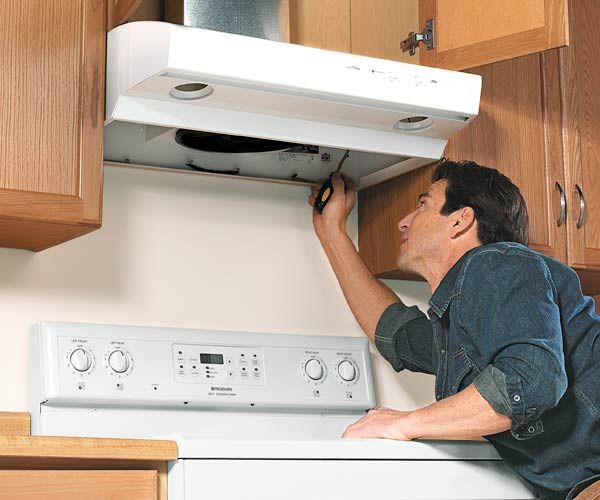The vent hood over our kitchen range lets in lots of cold air in the winter, and gets pretty cold itself. I have to block the vent’s intake with boards, and then remove them when I turn on the fan. Have you got a better solution?
—Dave Henseler, Maplewood, MN
Kevin O’Conner replies: That sounds very annoying, not to mention uncomfortable. I got in touch with Brian Wellnitz, senior global category manager for kitchen ventilation at Broan. He’s based in Wisconsin, and so has firsthand experience with cold winters like yours. Here’s what he had to say:
“A properly installed range hood has two metal dampers to stop outside air from coming in. One is at the top of the hood, where it connects to the duct, and the other is at the wall or roof cap where the duct exhausts its air. These thin metal flaps don’t form airtight seals because they have to open when the hood’s fan is working at low speed, but they should keep the cold drafts, and the hot ones, from coming in through your hood.
So the first order of business is to inspect the dampers and make sure they’re operating properly. Start with the outside cap. If the hood’s duct has a wall cap, it should have a spring holding its damper shut when the fan is off. Also, see if the damper itself is bent or being blocked from closing completely. Do the same thing with a roof cap, although it may not need a spring due to its more horizontal orientation. In either case, if a cap isn’t closing the way it’s supposed to, consider replacing it.
Now take a peek at the hood’s damper. That will involve removing the section of the duct it’s connected to. In many cases, you’ll find a butterfly damper, with two metal flaps pivoting on a horizontal bar. Although it’s unlikely that there’s a buildup of grease on the flaps, the bar, or its housing—the hood’s grease screens should be capturing most of it—give them a spritz of degreaser and gently wipe them clean. Then turn the fan on and off to check that the damper opens freely and shuts completely. Sometimes a small piece of foam stuck to the top of the flaps adds enough weight to ensure a no-gap fit when the fan is off.
Also, make sure no duct screws interfere with the flaps’ movement. Installers may inadvertently plant a few in the wrong spot. Again, if the damper is damaged, put in a new one, carefully, before reconnecting the duct to the hood.
Your tweaked or new dampers should take care of your hood’s problem, and allow you to take down those boards.”

